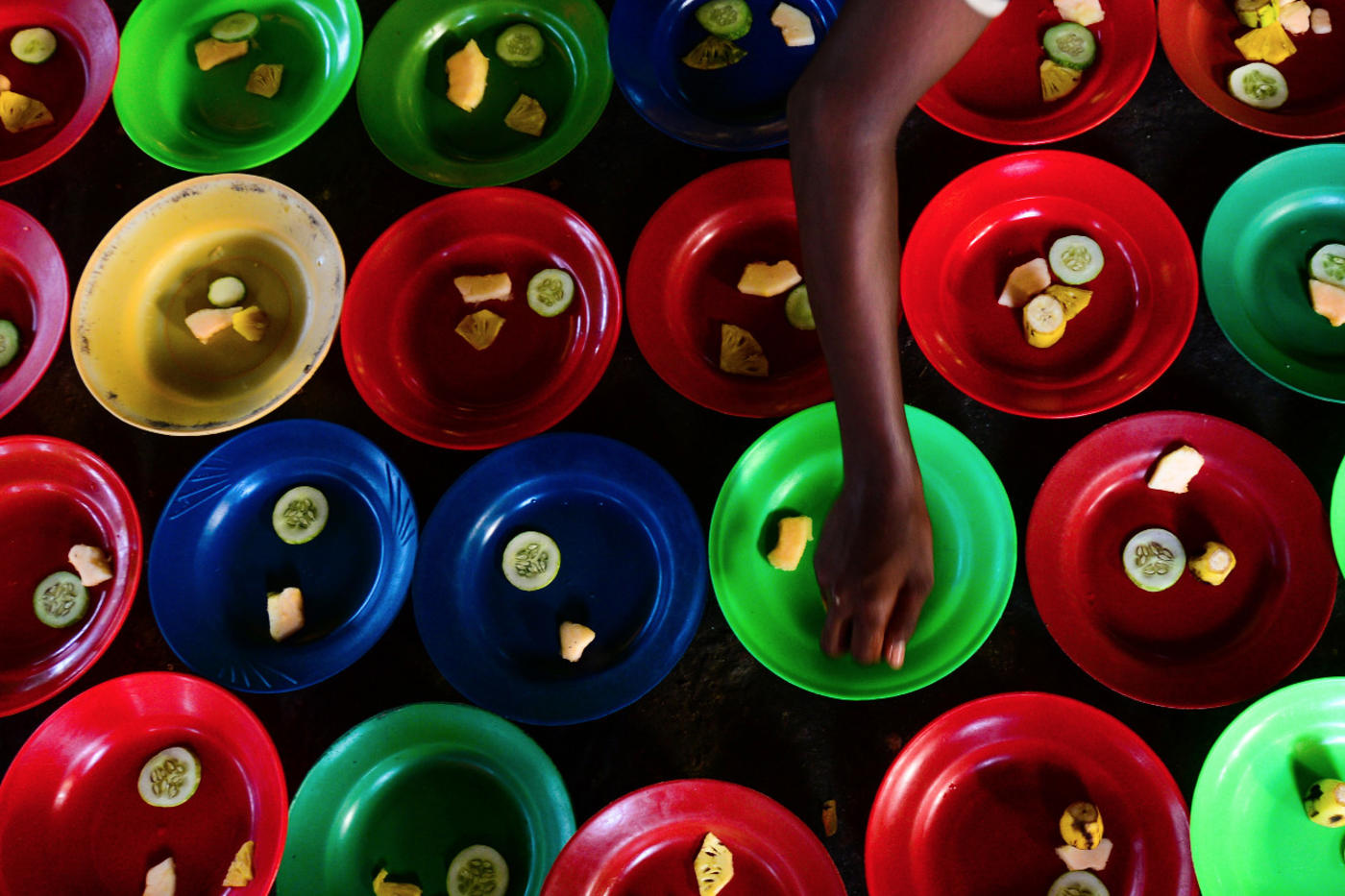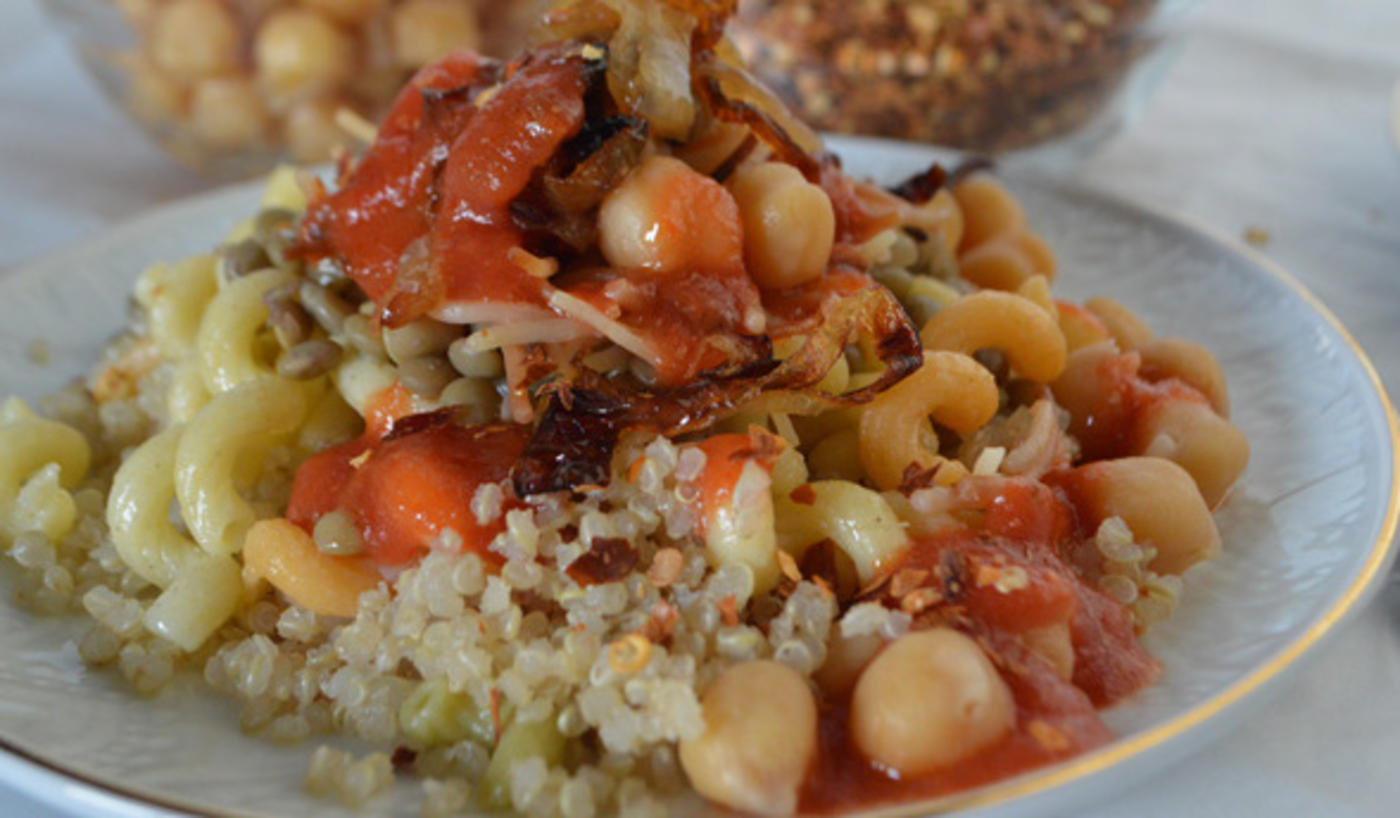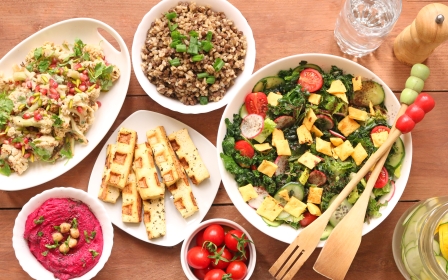Ramadan: 10 tips for healthy eating during holy month

Ramadan is a joyful time of the year - think Christmas and Thanksgiving rolled into one. Such holidays are always associated with speciality food.
Like turkey for Thanksgiving, the holy month - when Muslims abstain from all food and drink from dawn till sunset before marking the completion of the fast with iftar, the end-of-day meal - has its own signature dishes.
For example, it is popular in Morocco and Algeria to break the fast with harira, a tomato-based soup with chickpeas, lentils and sometimes lamb. Maqluba, or upside-down rice dish, is also popular in Palestine and Syria, and mahshi, or rice stuffed vegetables, in Egypt. Fried samosas are often prepared as part of Ramadan meals across the Muslim world, as are syrup heavy desserts like knafeh, qatayef and basbousa.
In many homes, the day-long fast is broken at the sunset call to prayer, with a few dates, a sweet drink, a bowl of soup and sometimes fruit or a small helping of khoshaf - dried fruit compote. After this quick first course there is usually a pause to perform sunset prayers, before returning to the dinner table for iftar, a hearty main meal (of rice, pasta, meat, chicken) that will be capped with decadent desserts and some tea or coffee.
In my household at least, this means that in just over an hour we eat so much food we can barely move or breathe. This is why, whenever I tried to go on a diet, I would always fall off the bandwagon during Ramadan.
Ironically, the month of fasting, purification and self-control is often the downfall of me and my friends. Indeed, several people I know go on a diet three months before Ramadan in preparation for the extra calories anticipated.
Foods associated with Ramadan are usually full of unrefined sugar and fat, which are empty calories – they fill you up quickly but have very little nutritional value. After a day of fasting, our digestive systems need the exact opposite of what is often inflicted on it come sunset. But in the evening you’ll feel full, sluggish, and low on energy (especially if you plan to take part in Taraweeh, the extended night prayers undertaken during Ramadan). Gorging on these types of foods also means you’re more likely to feel hungry during the next day of fasting.
But it doesn’t have to be this way.
The month of spiritual indulgence should not excuse overeating once the daily fast is over. With some simple substitutions and an open mind, many of the classic Ramadan recipes can still be adapted to a balanced diet and enjoyed. But there are a few things you can do to avoid piling on the pounds and feel a lot better for it.
For instance, opting for slow release, high nutritional value foods like wholemeal carbs, raw nuts, avocados, bananas, eggs, pulses and beans, not only is healthier, it will also help give you more energy throughout the day.
The life hacks below are as applicable during Ramadan as any other time of year. Important: as always, those with underlying health conditions or who are pregnant should always consult their doctor or dietician before embarking on any new diet.
1. The salt swap
This hack is simple. Instead of regular fine table salt, try the pink Himalayan variety, which has more trace minerals than table salt, none of the additives, and is minimally processed.
Sea salt is also a good alternative if you can’t get hold of Himalayan. Like Himalayan salt, it is mineral-rich and additive-free.
You can always go easy on the salt in general. The key here is moderation and taking it one step at a time really helps. Like sugar in tea, once you start reducing the amount of salt you use overall, your taste buds will quickly adjust.
Also think about foods that contain too much salt. Years ago I picked up the habit of scoffing pickels on the dinner table. Gradually I replaced them with a big bowl of salad that helped me reducing the amounts of sodium in my meals.
2. Sugar? Out!
The next idea is maybe not so easy: say no to sugar. While fasting can make you feel tired because of low blood sugar levels, it’s important to resist the urge to fill up on sweets as soon as the sun sets. Consuming too much sugar causes a spike in energy levels followed by a crash, leading to energy-draining cycles.
This has always been the hardest step for me. I love sugar, chocolate, desserts and everything in between. So in my case, I started slowly, using natural healthier alternatives like coconut sugar and honey, before eventually turning to natural sweeteners like stevia and monk fruit.
One of the recipes that I cannot do without in Ramadan is this date shake. I used to add one tablespoon of sugar per cup of milk for this recipe. It is my favourite drink to break a long fasting day. I then started sweetening it with honey, then reduced even that and relied only on the sweetness of the dates.
3. Eat smaller desserts...
This one might sound simple, but it really is effective: eat smaller sweet dishes. You can make baklava in portions like these rolled ones and bake them in whatever quantities you need. Even better, get your baklava fix in a much healthier way with baked apples.
4. ...and portions in general
In general, eating smaller portions of any of your favourite dishes – savoury or sweet – is going to be kind on your tested digestive system this month. I always find that by day three of Ramadan, I start to feel full after the first small bowl of soup, then feel less hungry throughout the day. Drinking enough water at night becomes the priority.
Another idea I got from a dietician is to trick your mind. I love pitta bread and can easily devour two pittas in just one meal, but most diets limit your bread to a quarter, which seemed impossible for me.
One dietician recommended that I start cutting the pitta bread into two full circles and just eat one of them. Though it is half a pitta, my mind will still think of it as a whole pitta bread. This seriously helped.
5. Cut out tinned tomatoes
I also now avoid using tinned tomatoes whenever possible. I was shocked to learn how much sugar is in a can of chopped tomatoes, or pasta sauce - around 14-24 grams of sugar per 420g tin. My grandma used to use her stainless steel mill to make her tomato sauce. Is throwing some tomatoes in the food processor that much of a hardship?
6. Think good carbs
To counter the effect of the reduced sugar consumption, opt for the good carbs that will help slowly release sugar into your bloodstream and keep your energy levels steadier without spiking your blood sugar levels. And while I limit my carbs, every now and then I indulge in good carbs.
These include fruits, sweet potato, brown rice, quinoa, whole grains and oats. For instance, I've used quinoa instead of white rice to make this amazing, much healthier koshari recipe.
7. Bring the crunch
Nuts are highly nutritious - almonds and walnuts are my favourite - so snack on them. They can add easily add crunch to oatmeal, yoghurt, salads and steamed vegetables. Bring life to many of your dishes by sprinkling some crushed nuts or a handful of slivered almonds over the top.
8. Forget the deep fryer
If you’re a fan of the deep fryer, or even if you only pull it out of storage for this one time of year, there is still some hope. One obvious – but recommended - hack is to try baking instead of deep-frying. For example, these samosas, baked in the oven, are just as delicious as the fried alternatives.
For this, you need a baking tray with a wire rack or, if you don’t have one, you can place your samosas on an elevated rack over a baking tray. Some tried and tested recipes include these baked aubergines. Baked kibbeh is also a treat instead of frying it. But if all else fails, try to pan-fry to reduce the fat that will ultimately be absorbed by the food.
9. The value of good oils
Incorporate more good oils in your recipes: I like using more extra virgin olive oil, avocado oil and coconut oil. Check which oil to use in different cooking situations and their smoking point. The higher the smoking point the better, since over heating oils takes away beneficial nutrients and produces harmful free radicals.
1o. Everything's gone green
Finally, when it comes to dishing out your delicious, healthy meal to break the fast, why not serve it over a bed of leafy greens? What about spinach, chard, collard, lettuce and rocket? These greens not only add colour to your plate but come loaded with vitamins, minerals and fibres.
Ramadan is a time for resolutions and I’ve made it my goal to have a good one this year. If, like me, you struggle to abstain from the feasting denied during the fasting day, these ideas should help you at least take a step towards your ultimate goal.
For more recipes and ideas from Amira Ibrahim, head over to Amira's Pantry.
This article is available in French on Middle East Eye French edition.
Middle East Eye propose une couverture et une analyse indépendantes et incomparables du Moyen-Orient, de l’Afrique du Nord et d’autres régions du monde. Pour en savoir plus sur la reprise de ce contenu et les frais qui s’appliquent, veuillez remplir ce formulaire [en anglais]. Pour en savoir plus sur MEE, cliquez ici [en anglais].










